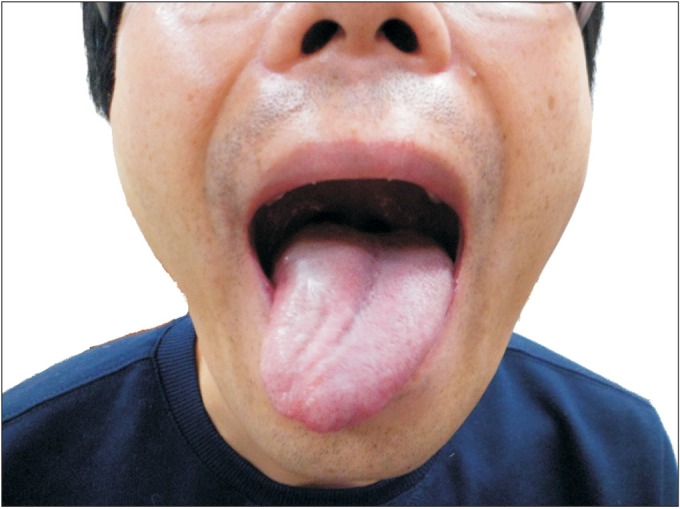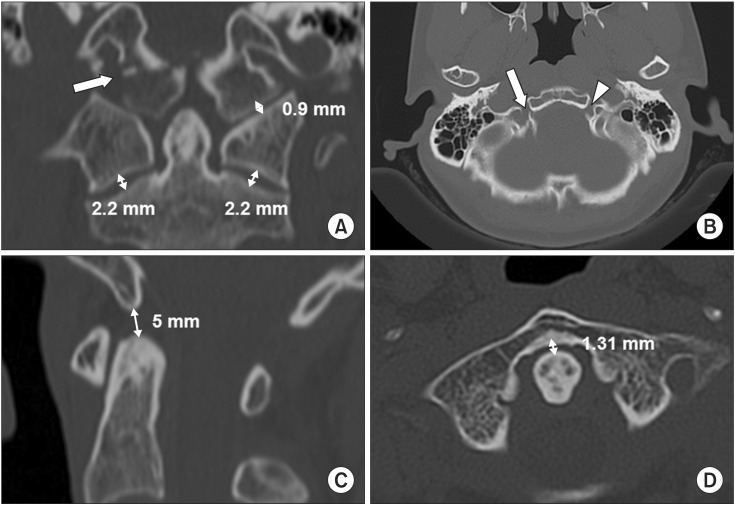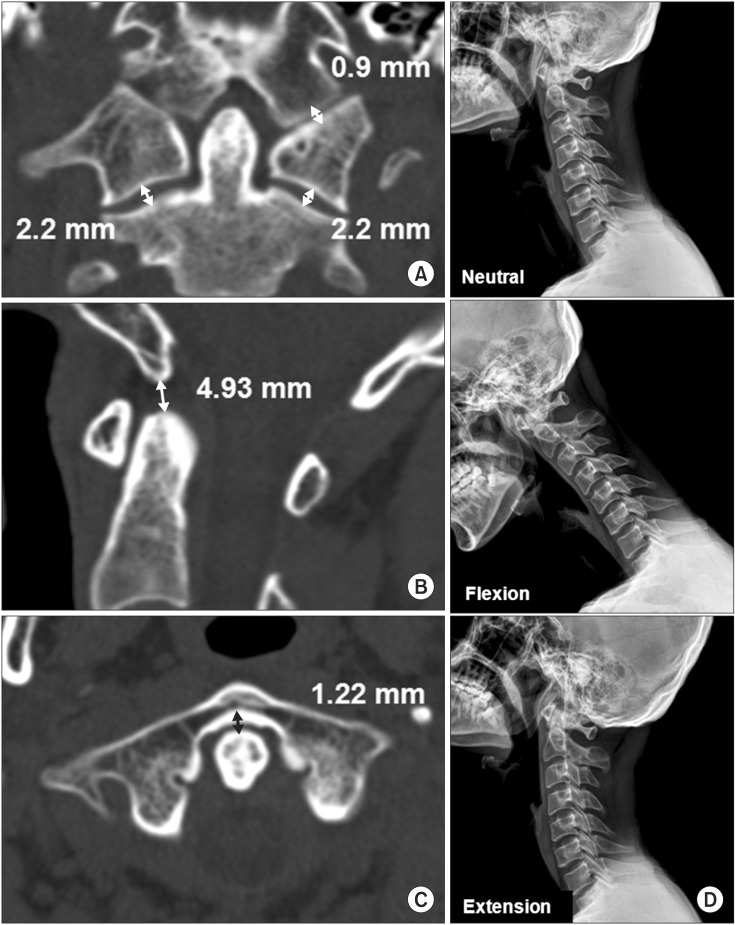Ann Rehabil Med.
2014 Oct;38(5):689-693. 10.5535/arm.2014.38.5.689.
Occipital Condyle Fracture With Isolated Unilateral Hypoglossal Nerve Palsy
- Affiliations
-
- 1Department of Physical & Rehabilitation Medicine, Gachon University School of Medicine, Incheon, Korea. pmrdoc@gilhospital.com
- KMID: 2266504
- DOI: http://doi.org/10.5535/arm.2014.38.5.689
Abstract
- Occipital condyle fractures (OCFs) with selective involvement of the hypoglossal canal are rare. OCFs usually occur after major trauma and combine multiple fractures. We describe a 38-year-old man who presented with neck pain and a tongue deviation to the right side after a traffic accident. Severe limitations were detected during active and passive range of neck motion in all directions. A physical examination revealed a normal gag reflex and normal mobility of the palate, larynx, and shoulder girdle. He had normal taste and general sensation in his tongue. However, he presented with a tongue deviation to the right side on protrusion. A videofluoroscopic swallowing study revealed piecemeal deglutition due to decreased tongue mobility but no aspiration of food. Plain X-ray film findings were negative, but a computed tomography study with coronal reconstruction demonstrated a right OCF involving the hypoglossal canal. An electrodiagnostic study revealed evidence of right hypoglossal nerve palsy. We report a rare case of isolated hypoglossal nerve palsy caused by an OCF.
Keyword
MeSH Terms
Figure
Reference
-
1. Anderson PA, Montesano PX. Morphology and treatment of occipital condyle fractures. Spine (Phila Pa 1976). 1988; 13:731–736. PMID: 3194779.
Article2. Tuli S, Tator CH, Fehlings MG, Mackay M. Occipital condyle fractures. Neurosurgery. 1997; 41:368–377. PMID: 9257304.
Article3. Kaushik V, Kelly G, Richards SD, Saeed SR. Isolated unilateral hypoglossal nerve palsy after minor head trauma. Clin Neurol Neurosurg. 2002; 105:42–47. PMID: 12445924.
Article4. Choi HK, Chung BS, Shin MS. Delayed hypoglossal nerve palsy following fracture of the occipital condyle. J Korean Neurosurg Soc. 1998; 27:403–406.5. Hanson JA, Deliganis AV, Baxter AB, Cohen WA, Linnau KF, Wilson AJ, et al. Radiologic and clinical spectrum of occipital condyle fractures: retrospective review of 107 consecutive fractures in 95 patients. AJR Am J Roentgenol. 2002; 178:1261–1268. PMID: 11959743.6. Song KJ, Choi BW, Kim SJ, Yoon SJ. Cross-cultural adaptation and validation of the Korean version of the Neck Disability Index. J Korean Orthop Assoc. 2009; 44:350–359.
Article7. Maddox JJ, Rodriguez-Feo JA 3rd, Maddox GE, Gullung G, McGwin G, Theiss SM. Nonoperative treatment of occipital condyle fractures: an outcomes review of 32 fractures. Spine (Phila Pa 1976). 2012; 37:E964–E968. PMID: 22414996.8. Caroli E, Rocchi G, Orlando ER, Delfini R. Occipital condyle fractures: report of five cases and literature review. Eur Spine J. 2005; 14:487–492. PMID: 15754215.
Article9. Maserati MB, Stephens B, Zohny Z, Lee JY, Kanter AS, Spiro RM, et al. Occipital condyle fractures: clinical decision rule and surgical management. J Neurosurg Spine. 2009; 11:388–395. PMID: 19929333.
Article10. Mueller FJ, Fuechtmeier B, Kinner B, Rosskopf M, Neumann C, Nerlich M, et al. Occipital condyle fractures: prospective follow-up of 31 cases within 5 years at a level 1 trauma centre. Eur Spine J. 2012; 21:289–294. PMID: 21833573.
- Full Text Links
- Actions
-
Cited
- CITED
-
- Close
- Share
- Similar articles
-
- Delayed Hypoglossal Nerve Palsy Following Fracture of the Occipital Condyle: Case Report
- Idiopathic Isolated Hypoglossal Nerve Palsy After Upper Respiratory Infection
- A Case of Occipital Condyle Syndrome Associated with Hepatocellular Carcinoma
- A Case of Improved Idiopathic Isolated Hypoglossal Nerve Palsy without Use of Steroid
- Delayed Isolated Hypoglossal Nerve Palsy after Submandibular Gland Surgery




